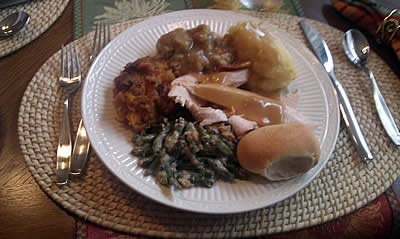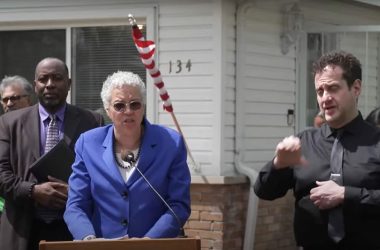
By: Vicki Quade
Nuns4Fun Entertainment
Chicago, IL-(ENEWSPF) Put that turkey or ham away and try some skunk this year for Thanksgiving. Not into skunk? Try it, you might like it. Skunk was a delicacy to the Wampanoag, the Native Americans who shared their food with the Pilgrims.
Right now, you’re thinking about that Thanksgiving dinner we all know about, the one that took place over three days in October 1621.
But was that the first Thanksgiving? Maybe not. Some argue the first dinner giving thanks was celebrated on September 8, 1565, in St. Augustine, Florida, when Native Americans and Spanish settlers held a feast and a Holy Mass was offered.
That’s not the only entry in the Thanksgiving sweepstakes.
On April 30, 1598, in El Paso, Texas, Spanish explorer Don Juan de Oñate declared a day of Thanksgiving after a terrible storm and then unbelievable heat that had waylaid his expedition finally subsided.
A member of that expedition wrote, “We built a great bonfire and roasted the meat and fish, and then all sat down to a repast the like of which we had never enjoyed before.” Of course, a Mass was also celebrated.
So what should we celebrate? We asked Mother Superior and she said she’d think about it. Then she texted the line from The Man Who Shot Liberty Valance: “When the legend becomes fact, print the legend.”
The Catholic Origins of Thanksgiving
Tisquantum, or Squanto as he is known, is the Native American man who mediated between the Puritan Pilgrims and the Wampanoag, the collective tribe. He was a member of the Patuxet tribe.
His story is fascinating.
In 1614, Squanto was enslaved by the English explorer Thomas Hunt, who brought him to Spain, then sold him to some local monks. They baptized him Catholic and educated him. Squanto eventually made his way to England, then returned to North America in 1619, escaping from an expedition that brought him close to Cape Cod.
When he got to his old village, he discovered all of the Patuxet were wiped out by disease brought by the European explorers. That village is now the site of Plymouth, Mass.
He then joined a neighboring tribe, as a servant, but since he could speak English, he quickly became an interpreter between the Pilgrims and the Wampanoag Chief Massasoit. He also taught the Pilgrims how to plant corn, so they would have a steady source of food.
He died of fever only 13 months after that famous Thanksgiving feast.
Eat Like the Pilgrims: What Did They Serve at that Thanksgiving?
The Pilgrims landed in 1620 and were starving after their first year until they learned how to plant corn. That first harvest was so successful the group’s leader, William Bradford, called for a feast to celebrate their good fortune.
When the Pilgrims and Native Americans had their Thanksgiving feast in 1621, they didn’t have mashed potatoes, sweet potato casseroles, pumpkin pies, or cranberry sauce. In fact, potatoes had yet to be introduced to North America, butter and wheat flour for pie crusts weren’t available, and cranberry sauce didn’t exist back then.
The Thanksgiving food we know today is nothing like what the 53 surviving Pilgrims and over 90 Native Americans hunted, harvested, prepared, and served at the famous meal.
Even though no one knows the complete dinner menu, historians are certain the group enjoyed wildfowl (goose, duck, swan, pigeons), wild turkey, venison, porridge, and cornbread. And it’s possible they also had boiled eels, lobster, clams, and mussels. They might have prepared chestnuts, walnuts, beechnuts, hickory nuts, maybe as a stuffing. And for vegetables, they could have had multi-colored corn, pumpkin, squash, onions, dried beans and peas, lettuce, spinach, and radishes. And don’t forget that skunk.
We don’t really know what they ate, but we do know that Pilgrims brought pigs, chickens, and goats with them to America, but how many were left after that first winter? If hens or goats were still around, the Pilgrims might have brought cheese and eggs. Or deviled eggs.
There’s no better way to connect with our founding fathers and mothers than to taste the very recipes they enjoyed. So, go online and find some of those early recipes and try them out this year! Skunk? Well, take out that stink gland, toss it, and then roast the rest of the critter.
Nuns4Fun Entertainment Inc, an organization that makes donations to religious orders of sisters in the Chicagoland area. “We want to give back to these women who did so much for all of us. And we also urge people who have come to see our shows to donate on their own, to find orders who taught them and to make a donation,” the group says on its website.








